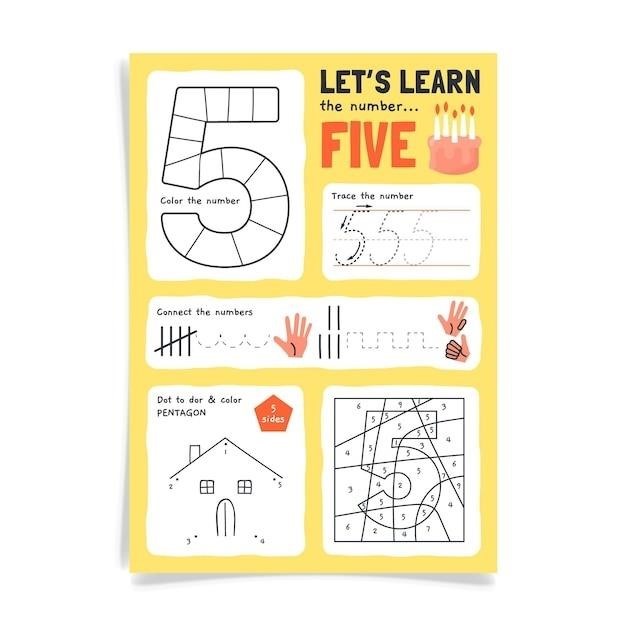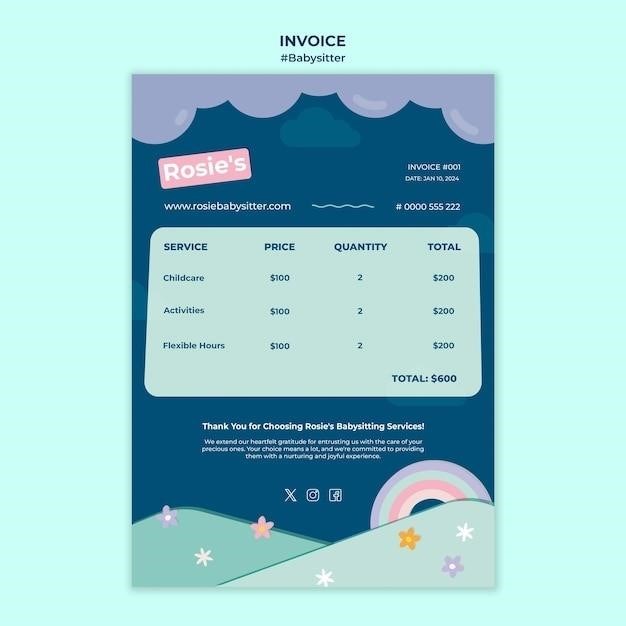Solution-Focused Therapy Worksheets⁚ A Guide to Finding Solutions
This guide explores the power of solution-focused therapy worksheets in helping individuals identify and utilize their strengths to overcome challenges and achieve their goals. It delves into the core principles of this approach, highlighting its emphasis on solutions, future-oriented focus, and strengths-based perspective. The guide provides insights into commonly used worksheets, such as the Miracle Question, Scaling Questions, and the TEAM Worksheet, showcasing how they facilitate collaborative solution-finding and empower clients to take ownership of their change process. The guide also offers valuable resources for accessing readily available solution-focused therapy worksheets, allowing readers to readily implement these tools in their personal or professional practice.
The Essence of Solution-Focused Therapy
Solution-Focused Therapy (SFT) stands out as a unique and effective therapeutic approach that diverges from traditional problem-focused methods. Instead of dwelling on the past or analyzing the intricacies of a problem, SFT focuses on identifying and amplifying the client’s strengths and resources to create positive change. This future-oriented approach encourages clients to envision a desired future, explore exceptions to their problems, and develop concrete steps to achieve their goals. SFT empowers clients to take an active role in their own healing journey, recognizing their inherent capacity for change and growth.
SFT’s emphasis on solutions stems from the belief that focusing on problems can perpetuate negative cycles and limit the client’s perspective. By shifting the focus to desired outcomes, SFT helps clients tap into their innate resilience and problem-solving abilities. This approach also recognizes that every individual possesses unique strengths and resources that can be leveraged to overcome challenges. SFT emphasizes the power of these strengths, enabling clients to build upon their existing skills and competencies to create lasting change.
Solution-Focused Therapy⁚ A Brief History
Solution-Focused Therapy (SFT) emerged in the 1980s, rooted in the work of Steve de Shazer and Insoo Kim Berg at the Milwaukee Brief Therapy Center. Their groundbreaking approach challenged traditional psychotherapy models by emphasizing solutions over problems. This shift in focus stemmed from their observation that many clients often entered therapy with a clear vision of what they wanted to change, but became bogged down in discussing the complexities of their problems. SFT sought to streamline the therapeutic process by focusing on what clients desired and how they could achieve their goals.
De Shazer and Berg’s initial work with families and couples led to the development of SFT’s core principles, including a future-oriented perspective, a focus on client strengths, and a collaborative approach to therapy. The approach gained popularity due to its effectiveness in addressing a wide range of issues, including anxiety, depression, relationship difficulties, and substance abuse; SFT’s emphasis on brevity and its focus on solutions resonated with clients seeking practical and impactful therapy experiences.
Key Principles of Solution-Focused Therapy
Solution-Focused Therapy (SFT) is built upon a set of fundamental principles that guide its unique approach to therapy. These principles emphasize a shift in focus from dwelling on problems to identifying and amplifying solutions.
Firstly, SFT embraces a future-oriented perspective, believing that focusing on desired outcomes, rather than past experiences, fosters positive change. This future focus empowers clients to envision a life free from the limitations of their current challenges. Secondly, SFT prioritizes client strengths and resources, recognizing that individuals possess inherent capabilities to navigate difficulties. This strengths-based approach fosters self-efficacy and encourages clients to leverage their existing skills and abilities to create change.
Furthermore, SFT promotes a collaborative partnership between therapist and client. This collaborative approach emphasizes mutual respect and empowers clients to actively participate in the therapeutic process. The therapist acts as a guide and facilitator, working alongside the client to identify solutions and develop strategies for positive change. By upholding these key principles, SFT creates a supportive and empowering environment where clients can explore their strengths, envision a brighter future, and actively engage in their journey toward lasting well-being.
The Power of Worksheets in Solution-Focused Therapy
Worksheets serve as invaluable tools in solution-focused therapy, facilitating a structured and engaging approach to identifying solutions and fostering positive change. These worksheets act as prompts and guides, encouraging clients to actively participate in their therapeutic journey and explore their strengths and resources. By providing a visual framework for reflection and exploration, worksheets help clients to clarify their goals, identify exceptions to their problems (times when the problem was less severe or absent), and develop concrete steps toward achieving their desired outcomes.

The power of worksheets lies in their ability to translate abstract concepts into tangible actions. They encourage clients to think critically about their experiences, pinpoint moments of success, and develop a sense of agency in their own change process. Worksheets also provide a tangible record of progress, allowing clients to track their journey and celebrate milestones along the way. Ultimately, solution-focused therapy worksheets serve as a valuable resource for both clients and therapists, fostering a collaborative and empowering approach to positive change.
Commonly Used Worksheets in Solution-Focused Therapy
Solution-focused therapy employs a variety of worksheets to guide clients toward desired outcomes. These worksheets are designed to encourage reflection, goal setting, and identification of strengths and resources. Among the most commonly used worksheets are⁚
- The Miracle Question⁚ This worksheet invites clients to imagine a future where their problem no longer exists. It prompts them to envision how their life would be different and what they would be doing, helping them to clarify their goals and desired outcomes.
- Scaling Questions⁚ This worksheet encourages clients to assess their progress toward their goals on a scale of 0 to 10. By identifying specific changes they have made and their current level of satisfaction, clients gain a clearer understanding of their progress and can identify areas for further growth.
- Strengths-Based Approach⁚ This worksheet focuses on identifying and utilizing the client’s strengths and resources. It encourages them to recognize their own capabilities and how they can leverage them to overcome challenges and achieve their goals.
These worksheets provide a structured framework for clients to explore their solutions, empowering them to take ownership of their change process and move towards a desired future.
The Miracle Question⁚ A Powerful Tool for Change
The Miracle Question is a cornerstone technique in solution-focused therapy, designed to shift the client’s focus from the problem to their desired future. It encourages them to imagine a scenario where their problem magically disappears overnight, prompting them to visualize what their life would be like without the issue. This powerful question helps clients⁚
- Clarify their goals⁚ By envisioning a problem-free future, clients become more aware of what they truly want and what changes they desire.
- Identify strengths and resources⁚ The Miracle Question encourages clients to think about what they would be doing differently in a problem-free future, highlighting their existing strengths and capabilities.
- Develop a sense of hope⁚ Imagining a positive future can instill a sense of hope and possibility, motivating clients to take action towards achieving their desired outcomes.
The Miracle Question empowers clients to envision a brighter future, encouraging them to take steps toward creating the change they desire.
Scaling Questions⁚ Measuring Progress Towards Goals
Scaling questions are a key tool in solution-focused therapy, offering a tangible way to track progress toward goals and identify subtle shifts in a client’s experience. These questions typically involve a numerical scale, often from 0 to 10, with 0 representing the lowest point on the scale and 10 representing the desired outcome. Therapists use scaling questions to⁚
- Assess current situation⁚ Clients are asked to rate their current situation on the scale, providing a baseline for measuring progress.
- Identify exceptions⁚ Therapists might ask about times when the client experienced a higher score on the scale, highlighting moments of improvement and identifying strategies that worked.
- Gauge motivation and optimism⁚ Clients’ ratings on the scale can reflect their level of motivation and optimism about achieving their goals.
- Encourage action⁚ Scaling questions can motivate clients to take steps toward their goals by prompting them to consider what they can do to increase their score on the scale.
Scaling questions provide a structured and collaborative approach to measuring progress, fostering a sense of agency and empowering clients to actively participate in their own change journey.
Strengths-Based Approach⁚ Identifying and Utilizing Resources

Solution-focused therapy is deeply rooted in a strengths-based approach, recognizing that clients possess inherent resources and capabilities that can facilitate change. This approach shifts the focus away from deficits and problems, emphasizing the identification and utilization of existing strengths and competencies. Worksheets designed to facilitate this process often employ a variety of techniques, such as⁚
- Strengths mind maps⁚ These visual tools encourage clients to brainstorm their strengths, skills, and positive qualities, creating a comprehensive map of their resources.
- “What worked” questions⁚ Therapists guide clients to reflect on past experiences where they successfully overcame challenges, highlighting the skills and strategies they used.
- Resource lists⁚ Clients are encouraged to create lists of their personal resources, including internal strengths, external supports, and coping mechanisms.
- “Miracle question” variations⁚ These questions focus on how clients might utilize their strengths to create a desired future, emphasizing their agency and problem-solving capabilities.
By focusing on strengths and resources, solution-focused therapy empowers clients to take ownership of their change process, fostering a sense of hope and confidence in their ability to create positive change.
The TEAM Worksheet⁚ A Collaborative Approach to Solution-Finding
The TEAM Worksheet embodies the collaborative spirit of solution-focused therapy, emphasizing the importance of shared responsibility in the change process. This worksheet encourages therapists and clients to work together as a team, actively participating in identifying solutions and developing a plan for progress. The structure of the TEAM Worksheet typically involves several key components⁚
- Problem identification⁚ Clients are encouraged to articulate the problem or challenge they are facing in a clear and concise manner.
- Goal setting⁚ Together, the therapist and client collaboratively define specific, measurable, achievable, relevant, and time-bound goals that align with the client’s desired outcome.
- Solution brainstorming⁚ The worksheet provides a space for brainstorming potential solutions, encouraging both the therapist and client to contribute ideas and strategies.
- Action plan development⁚ The team collaboratively outlines concrete steps the client can take to implement the chosen solutions, ensuring a clear path toward achieving their goals.
- Progress tracking⁚ The worksheet often includes a section for tracking progress toward the established goals, allowing for regular evaluation and adjustments to the action plan.
By fostering a collaborative and empowering environment, the TEAM Worksheet encourages clients to actively participate in their own change process, enhancing their sense of agency and commitment to achieving their goals.
Resources for Accessing Solution-Focused Therapy Worksheets
The digital age has made accessing solution-focused therapy worksheets incredibly convenient, offering a wide range of resources for both therapists and clients seeking to utilize this approach. Several online platforms and publications provide readily available worksheets, facilitating their use in various settings, from individual therapy sessions to educational workshops.
- Online Therapy Platforms⁚ Websites dedicated to mental health resources often offer downloadable solution-focused therapy worksheets. These platforms typically provide a diverse selection of worksheets addressing various challenges and goals, catering to different client needs.
- Academic Journals and Books⁚ Numerous academic journals and books specializing in solution-focused therapy often include readily accessible worksheets within their publications. These resources provide insights into the theoretical underpinnings of the approach and offer practical tools for implementation.
- Professional Organizations⁚ Organizations dedicated to solution-focused therapy, such as the Association for Solution-Focused Therapy (ASFT), often provide their members with access to a library of worksheets and resources. These organizations serve as valuable hubs for professionals seeking to expand their knowledge and practice of this approach.
- Independent Authors and Therapists⁚ Many therapists and authors specializing in solution-focused therapy have developed and shared their own unique worksheets online. These resources provide valuable insights into individual practitioner approaches and often address specific therapeutic niches.
By exploring these diverse resources, both therapists and clients can readily access solution-focused therapy worksheets, empowering them to embark on a collaborative journey toward achieving desired outcomes.



























